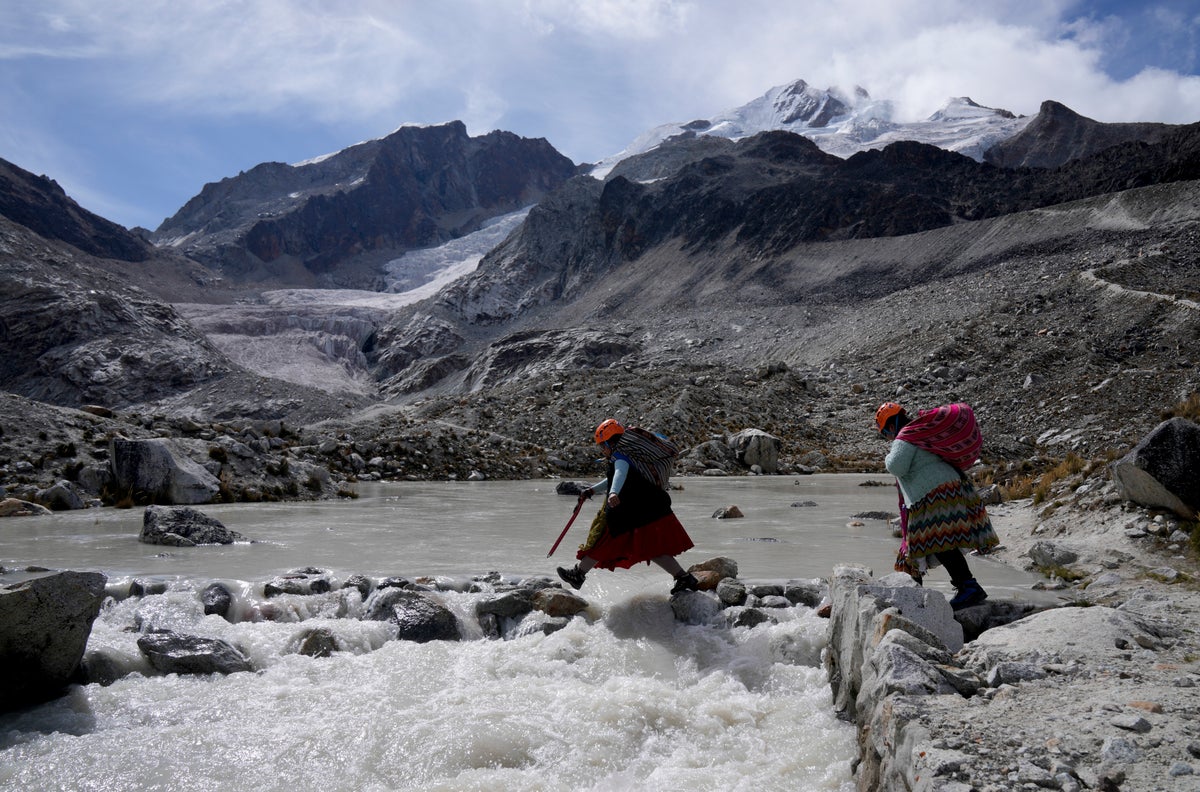
When they first started climbing the Andes peaks, they could hear the ice crunching under their crampons. These days, it’s the sound of melted water running beneath their feet that they mostly listen to as they make their ascents.
Dressed in colorful, multilayered skirts, a group of 20 Indigenous Bolivian women — known as the Cholita climbers — have been climbing the mountain range for the past eight years, working as tourist guides. But as the glaciers in the South American country retreat as a result of climate change, they worry about the future of their jobs.
The Aymara women remember a time when practically every spot on the glaciers was covered in snow, but now there are parts with nothing but rocks.
“There used to be a white blanket and now there is only rock," said Lidia Huayllas, one of the climbers. “The thaw is very noticeable.”
Huayllas said she has seen the snow-capped Huayna Potosí mountain, a 6,000-meter (19,600-feet) peak near the Bolivian city of El Alto, shrink little by little in the past two decades.
"We used to walk normally; now, there are rocks and water overflowing,” said the 57-year-old woman as she jumped from stone to stone to avoid getting her skirt and feet wet.
Edson Ramírez, a glaciologist from the Pierre and Marie Curie University in France, estimates that in the last 30 years, Bolivian glaciers have lost 40% of their thickness due to climate change. In the lower parts of the mountain, he says, the ice has basically vanished.
“We already lost Chacaltaya,” said Ramírez, referring to a 5,400-meter (17,700-feet) mountain that used to be a popular ski resort and now has no ice left.
With no ice left in the lower parts of the mountain range, the Cholita climbers need to go further up to find it. This has reduced the number of tourists seeking their services as guides.
Huayllas would not say how much she makes as a tour guide, but she said a Cholita climber currently makes about $30 per tour. That is less than the $50 per tour they used to make.
In 2022, during the September-December climbing season, the Cholitas did 30 tours, Huayllas said. This year, through early November, they had barely done 16.
The situation has gotten so critical, the 20 women have looked for other jobs to make ends meet. Some of the Cholitas have started making and selling blankets and coats with alpaca wool from the Andes, Huayllas said.
“If this continues, we're going to have to work in commerce or do something else for a living,” said Huayllas, although she quickly dismissed her own pessimistic thought, somehow hoping for a change: “No. This is our source of work.”
____
Follow AP’s coverage of Latin America and the Caribbean at https://apnews.com/hub/latin-america







